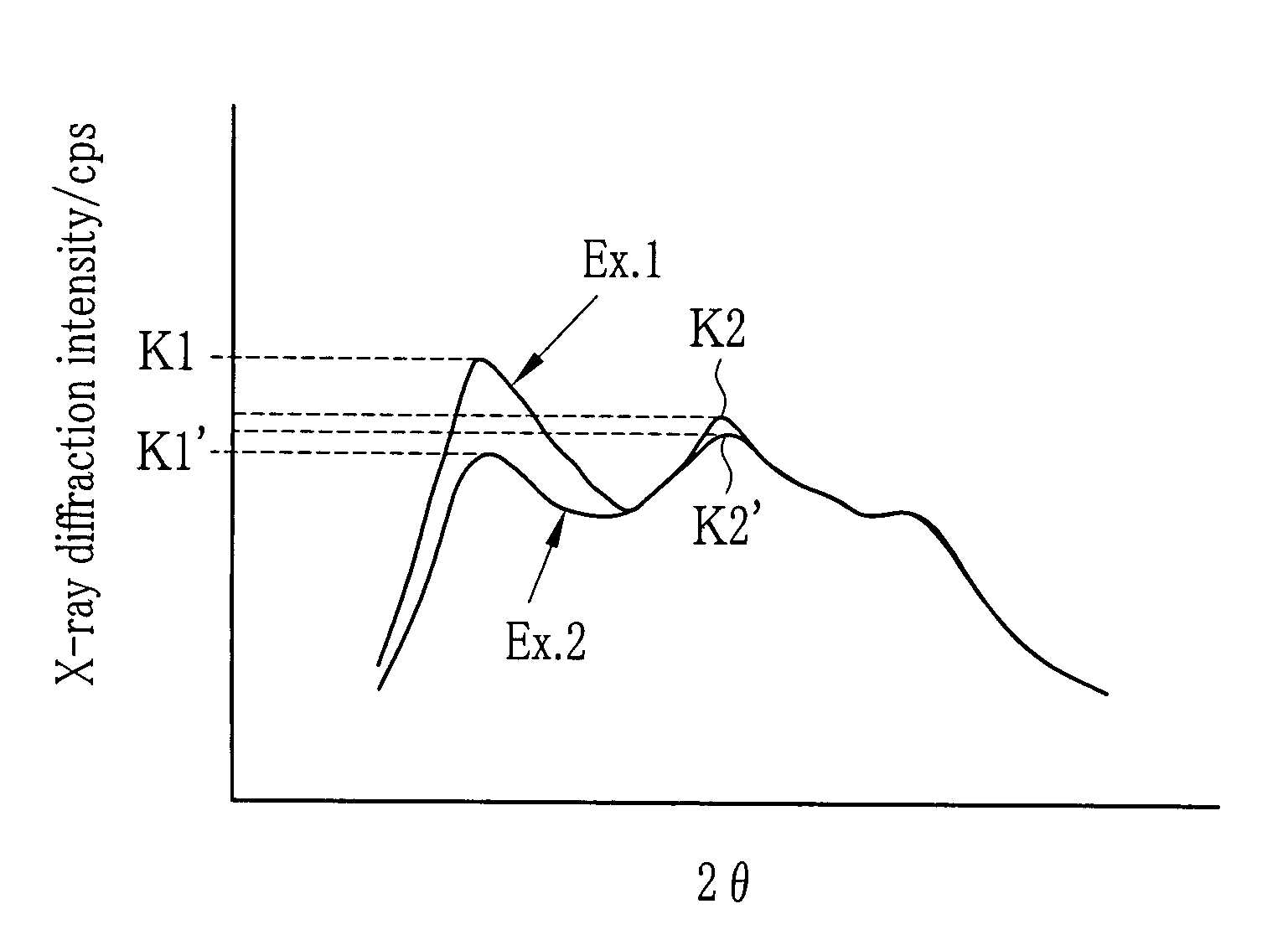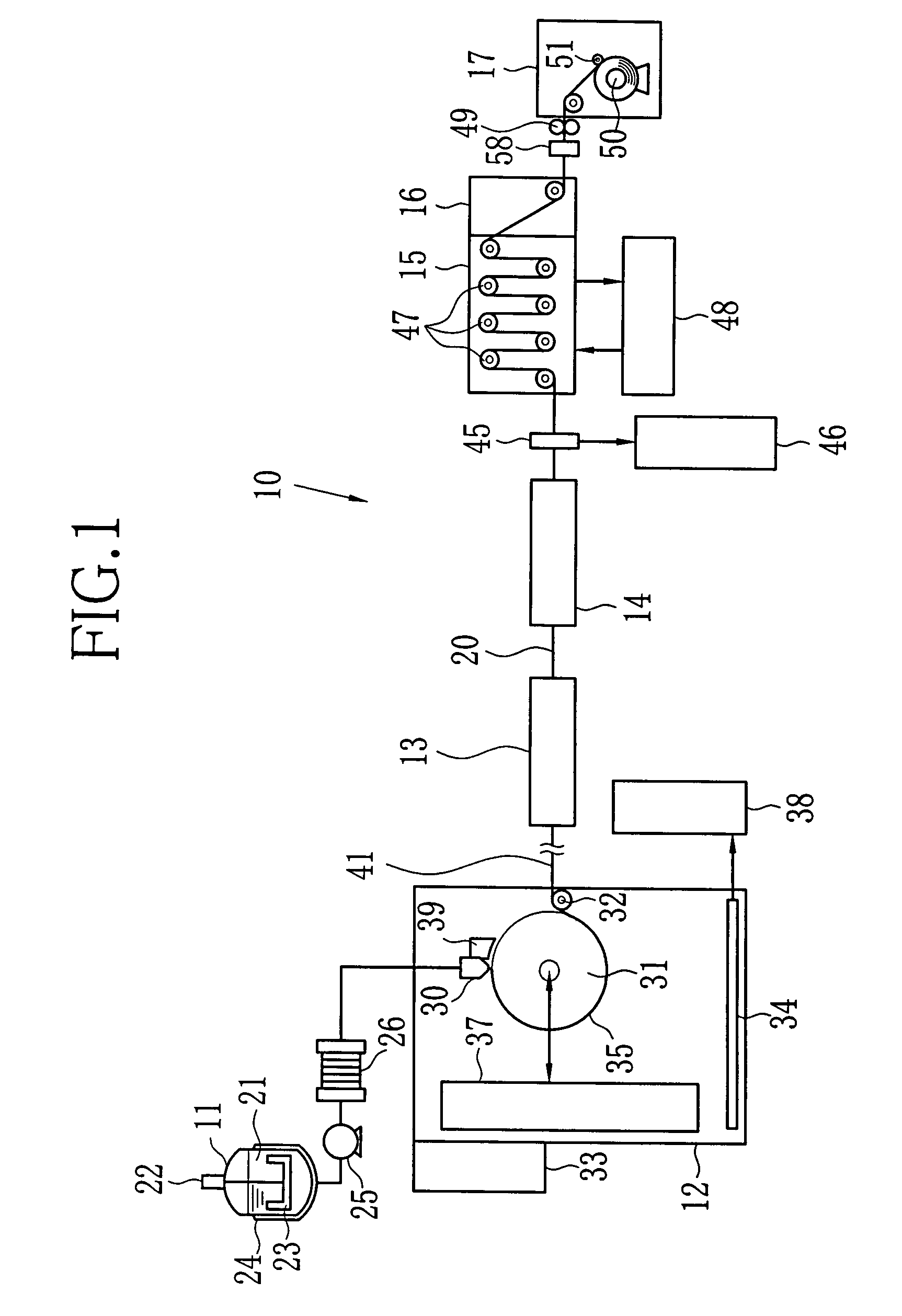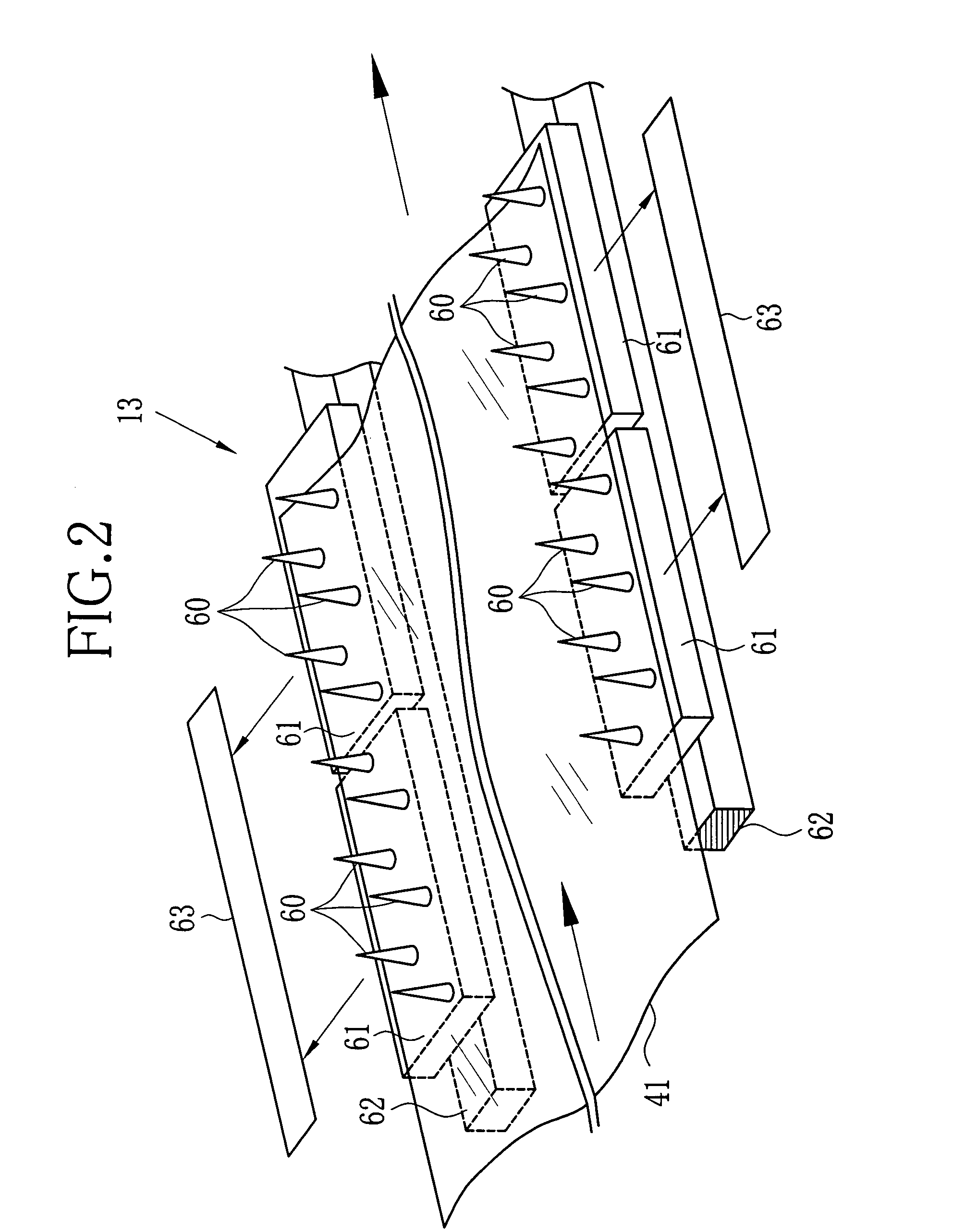Manufacturing method of polymer film
a polymer film and manufacturing method technology, applied in the field of manufacturing methods of polymer films, can solve the problems of difficult to produce film with high quality, low accuracy of film thickness, and generation of minute streaks (die lines) on the film, and achieve high retardation value, superior optical properties, and no degradation of transparency
- Summary
- Abstract
- Description
- Claims
- Application Information
AI Technical Summary
Benefits of technology
Problems solved by technology
Method used
Image
Examples
example 1
[0098]The dope 21 was prepared from following materials by the dope producing apparatus shown in FIG. 5. The composition of the dope 21 is shown below.
[0099]
Cellulose triacetate 100 mass. pct(substitution degree of acetyl group was 2.84, viscometricaverage degree of polymerization was 306, moisture content was0.2 mass. %, viscosity of 6% by mass of dichloromethane solutionwas 315 mPa · s, powder whose average of particle diameter was1.5 mm and standard deviation of the particle diameter was 0.5 mm)Dichloromethane (the first component of the solvent) 320 mass. pctMethanol (the second component of the solvent) 83 mass. pct1-Butanol (the third component of the solvent) 3 mass. pctPlasticizerA (Triphenylphosphate) 7.6 mass. pctPlasticizerB (Diphenylphosphate) 3.8 mass. pctUV-absorbing agent a: 0.7 mass. pct2-(2′-hydroxy-3′,5′-di-tert-butylphenyl)benzotriazolUV-absorbing agent b: 0.3 mass. pct2-(2′-hydroxy-3′,5′-di-tert-amylphenyl)-5-chlorobenzotriazoleCitric acid ester mixture:0.006 m...
example 2
[0127]In Example 2, the apparatuses and conditions for manufacturing the film was same as Example 1, except that a casting belt was used as the support (that is, the casting film 35 becomes to have the self-supporting property not by cooling solidification, but by drying). When the X-ray diffraction intensity of the film 20 right before entering into the clip tenter 14 was measured by the reflection method, K1 was 12000 cps and K2 was 13200 cps (that is, K1<K2). This relationship is illustrated in FIG. 6, with the curve labeled Ex. 2. In addition, Re was 55 nm, Rth was 210 nm, and the haze value was 3.2%.
[0128]As a result of evaluation of the films 20 obtained by Example 1 and Example 2, it is found that the film 20 of Example 1 has the superior values both in the retardation and the transparency compared to the film 20 of Example 2. Especially, in regard to the transparency, the film of Example 1 has more than 6 times higher value than the film of Example 2. From the result, it is ...
PUM
| Property | Measurement | Unit |
|---|---|---|
| surface temperature | aaaaa | aaaaa |
| temperature | aaaaa | aaaaa |
| temperature | aaaaa | aaaaa |
Abstract
Description
Claims
Application Information
 Login to View More
Login to View More - R&D
- Intellectual Property
- Life Sciences
- Materials
- Tech Scout
- Unparalleled Data Quality
- Higher Quality Content
- 60% Fewer Hallucinations
Browse by: Latest US Patents, China's latest patents, Technical Efficacy Thesaurus, Application Domain, Technology Topic, Popular Technical Reports.
© 2025 PatSnap. All rights reserved.Legal|Privacy policy|Modern Slavery Act Transparency Statement|Sitemap|About US| Contact US: help@patsnap.com



